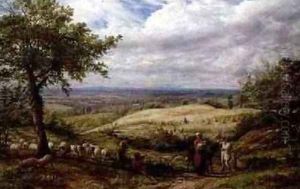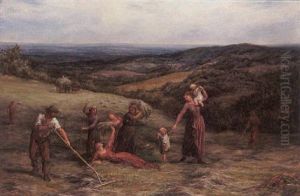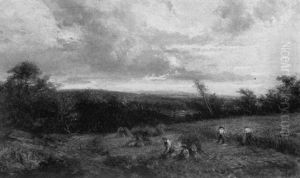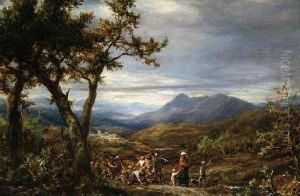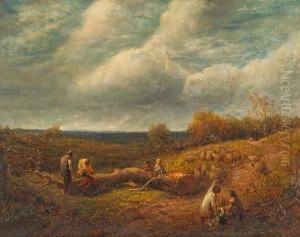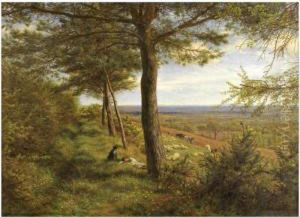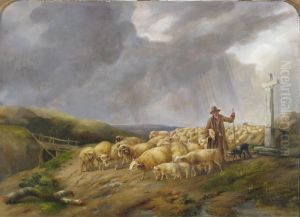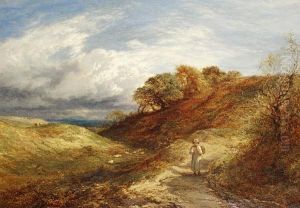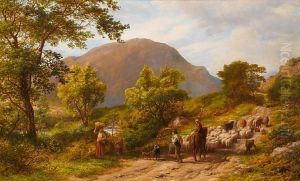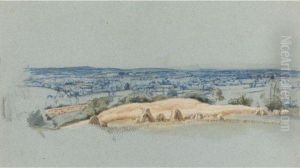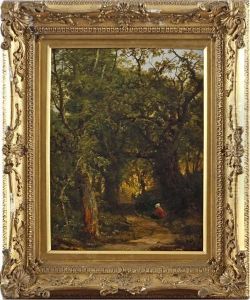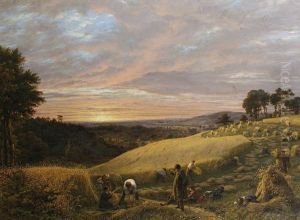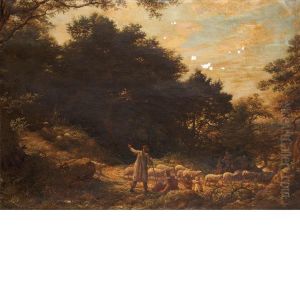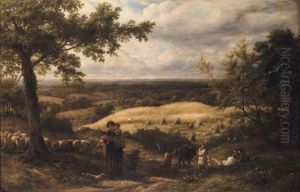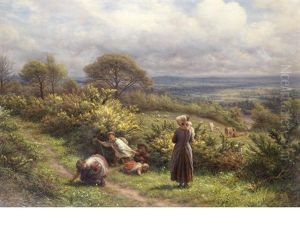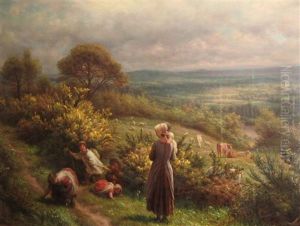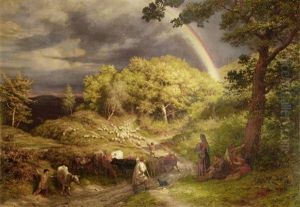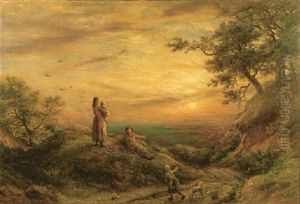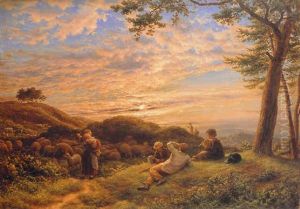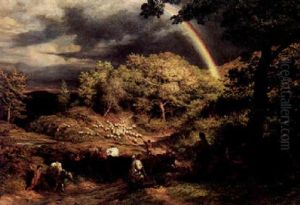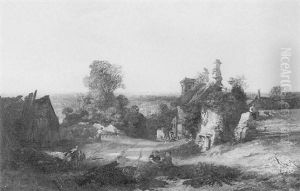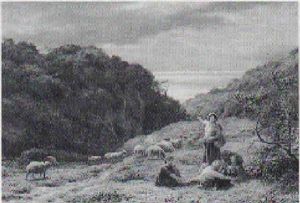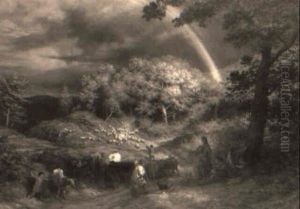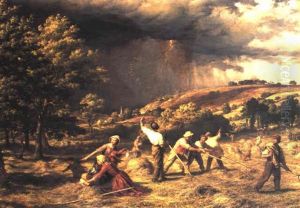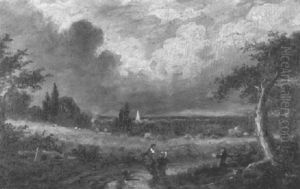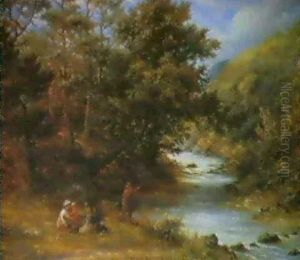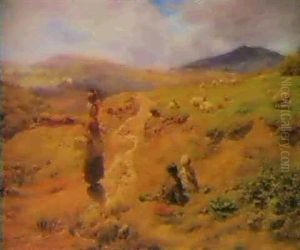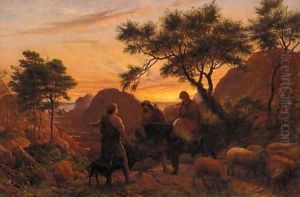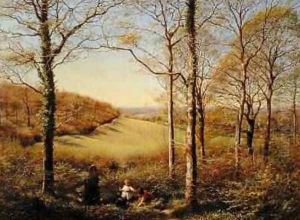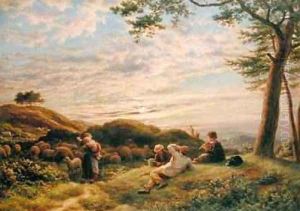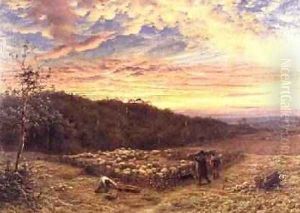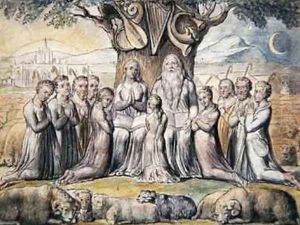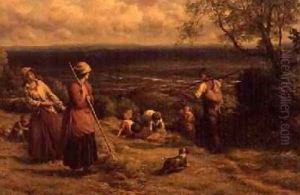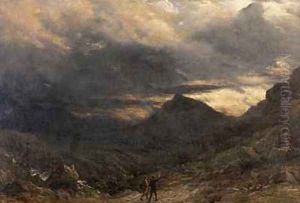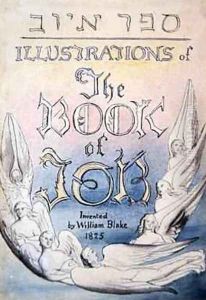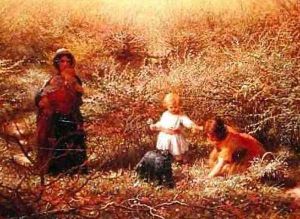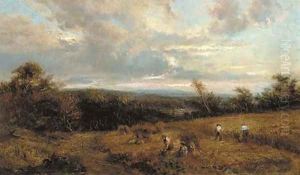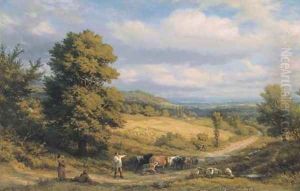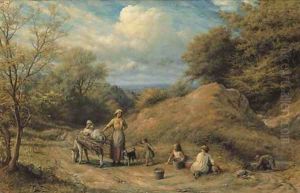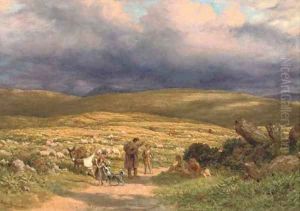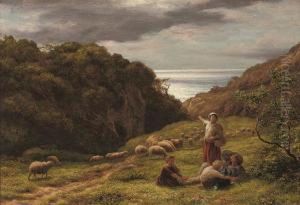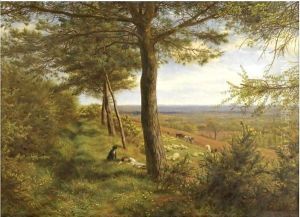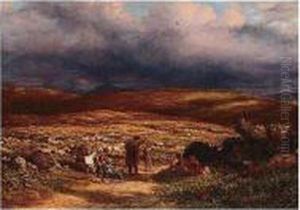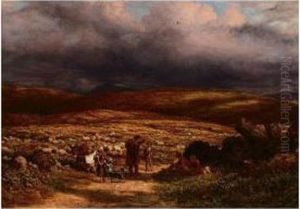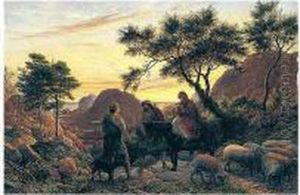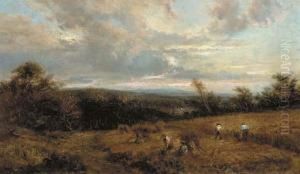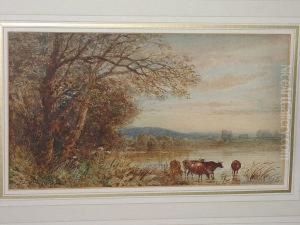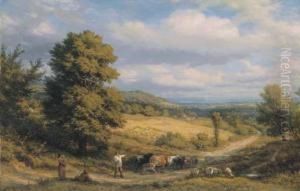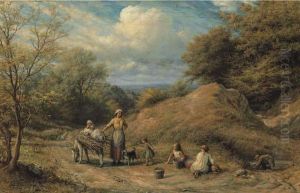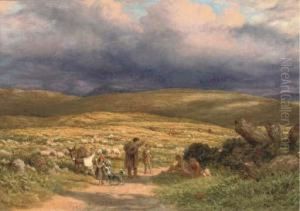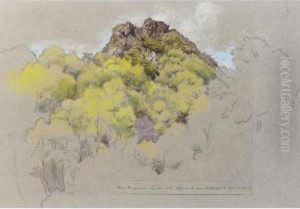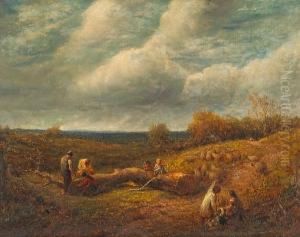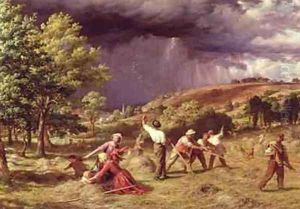James Thomas Linnell Paintings
James Thomas Linnell (1820-1905) was a British landscape painter, engraver, and portrait artist. He was born on January 10, 1820, in London, England, as the eldest son of John Linnell, who was a significant figure in English landscape painting and a close associate of William Blake. James Thomas Linnell is often associated with the second generation of English Romantic painters and was deeply influenced by his father's connections to the world of art, as well as by the work of other prominent artists of the time such as Samuel Palmer.
Linnell's work is characterized by its meticulous attention to natural detail, vibrant color, and an emphasis on the pastoral and idyllic aspects of the English countryside. He exhibited his work frequently at the Royal Academy and the British Institution, where he gained recognition and praise for his contributions to British landscape painting. His paintings often feature scenes of rural life and agricultural activities, reflecting a romanticized view of nature that was common among artists of the Romantic period.
Throughout his career, Linnell was overshadowed by the success and reputation of his father, which made it difficult for him to establish his own distinct artistic identity. Despite this challenge, he continued to paint and exhibit throughout his life, leaving behind a body of work that was appreciated for its beauty and technical skill. He also produced a number of engravings and portraits, although he is primarily remembered for his landscape paintings.
James Thomas Linnell passed away on November 15, 1905, leaving a legacy that has been reassessed over time. Art historians have come to recognize the significance of his contributions to the tradition of English landscape painting, and his works are now collected and exhibited in various art institutions around the United Kingdom.
